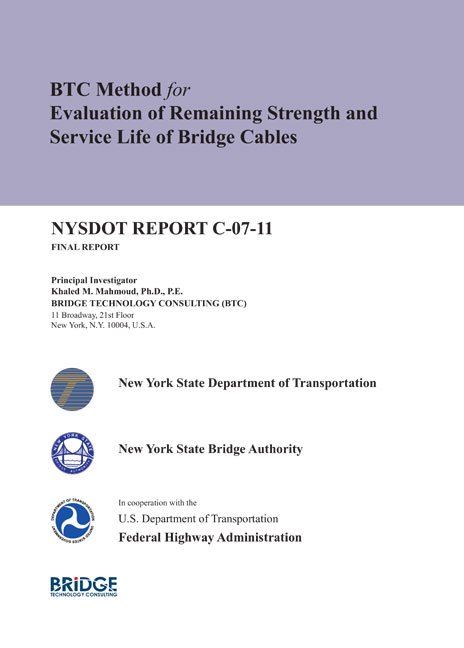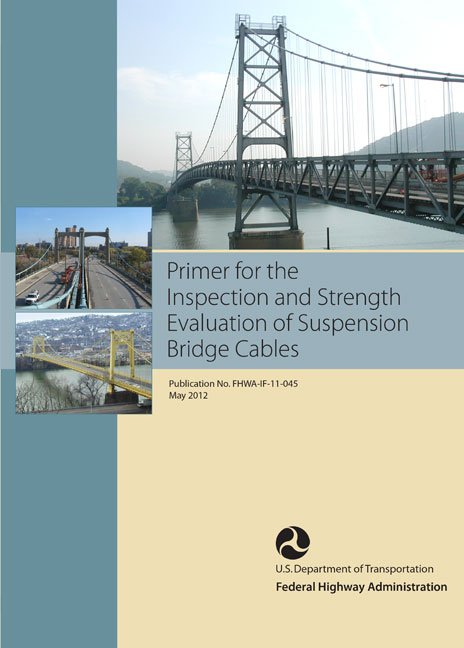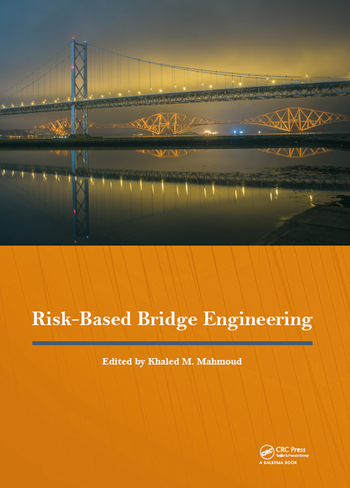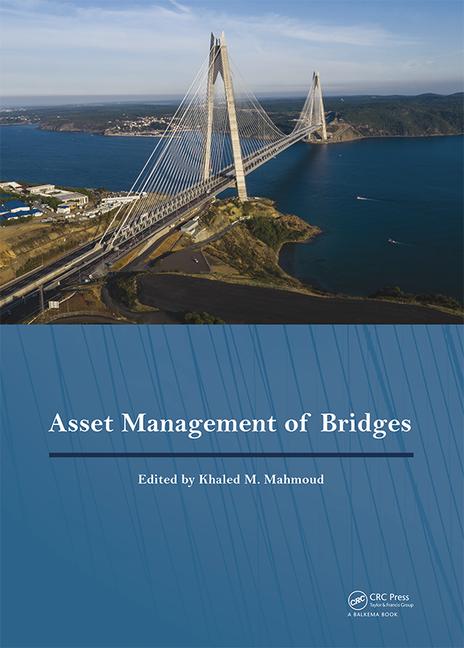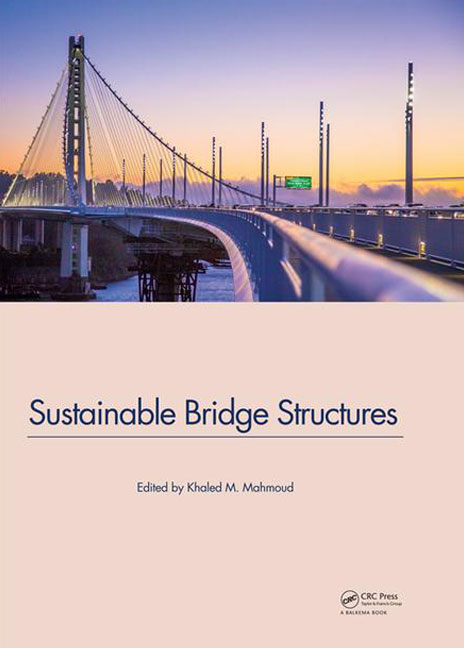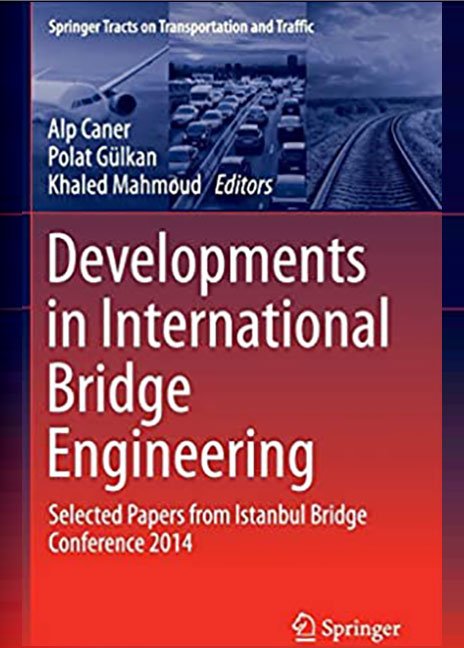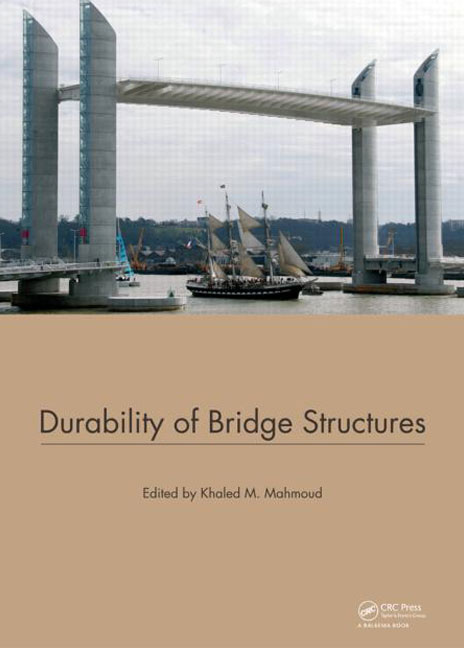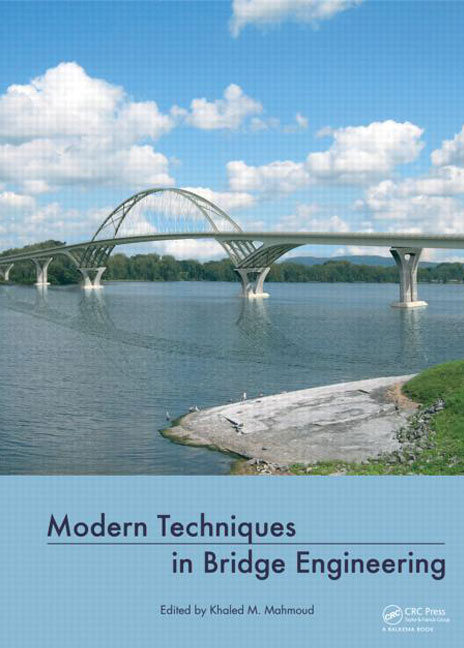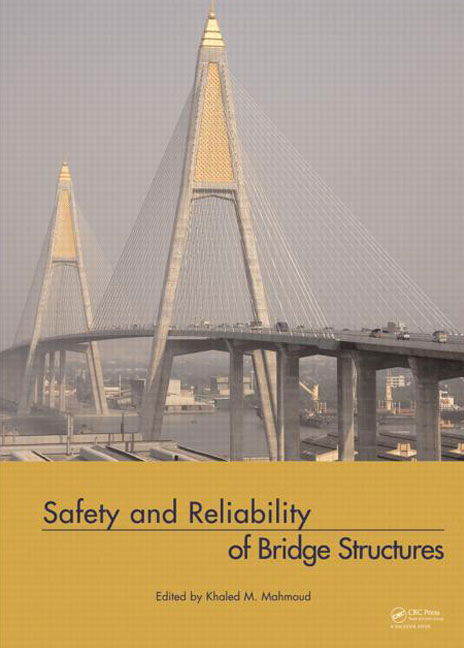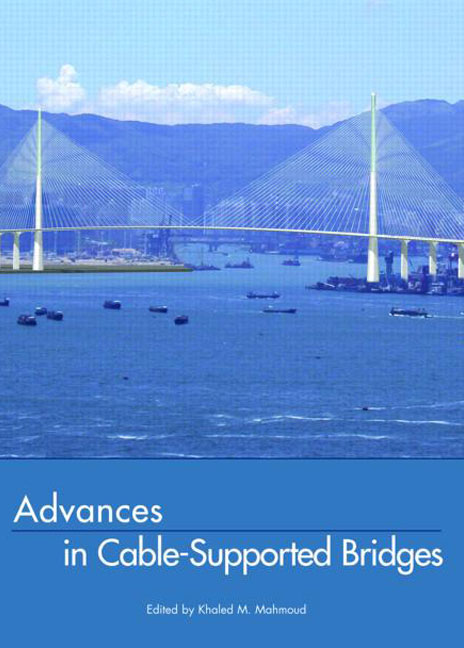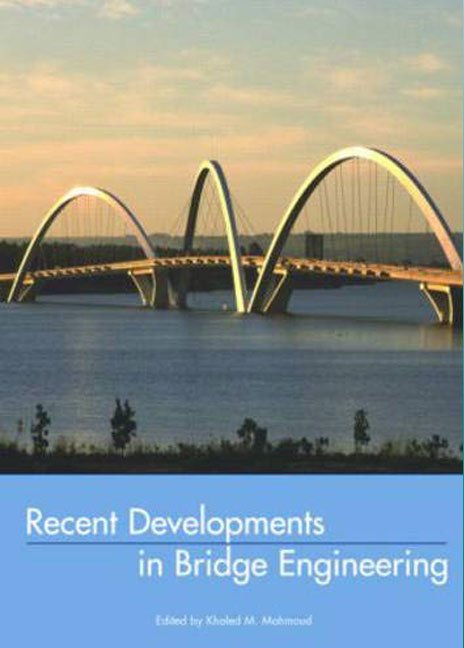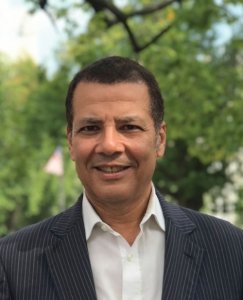
Dr. Khaled Mahmoud, PE
Chief Bridge Engineer
A world-renowned cable-supported bridge engineer, Dr. Khaled Mahmoud, PE, is the Chief Bridge Engineer for BTC. He is a prominent expert in the design, evaluation, fatigue analysis and fracture behavior of bridge cable systems.
A leading authority on bridge cable high-strength steel wire, Khaled invented the BTC method for cable strength evaluation, a patented methodology, published in two of the U.S. Federal Highway Administration (FHWA) reports. The BTC method has been applied at the Pierre Laporte Bridge in Canada, Forth Road Bridge in Scotland, the Williamsburg Bridge, Bronx-Whitestone Bridge and Mid-Hudson Bridge in the USA.
Currently, Khaled is leading BTC’s engineering review of the suspension cable system for the 1915 Çanakkale Bridge in Turkey. When it opens to traffic, the 1915 Çanakkale Bridge will be the longest suspension bridge in the world with a main span of 2023 meters and tower height of 318 meters. Khaled led BTC’s review of design, and supervision of fabrication and construction of Yavuz Sultan Selim (3rd Bosphorus) Bridge in Turkey, a hybrid suspension/cable-stayed bridge. He is a member of the design team for the winning bid of the Chacao Bridge in Chile, a suspension bridge with three main towers and two main suspension spans.
Editor-in-Chief of the Journal of Bridge Structures, Khaled is the editor of ten books on bridge engineering.
He is the author of and coauthor of the following FHWA Manuals on Bridge Cables:
- Primer for the Inspection and Strength Evaluation of Suspension Bridge Cables, U.S. Department of Transportation, Federal Highway Administration, Publication No. FHWA-IF-11-045, May 2012.
- BTC Method for Evaluation of Remaining Strength and Service Life of Bridge Cables, New York State Department of Transportation, NYSDOT REPORT C-07-11, September 2011.
Khaled is a member of the Technical Working Group that developed the U.S. Federal Highway Administration (FHWA) “Design Guidelines for Arch and Cable-Supported Signature Bridges” and served on the Post-Tensioning Institute (PTI) Cable-Stayed Bridge Committee for “Recommendations for Stay-Cable Design, Testing and Installation”:
- Design Guidelines for Arch and Cable-Supported Signature Bridges, U.S. Department of Transportation, Federal Highway Administration (FHWA), FHW-NIH-11-023, 2012.
- PTI Recommendations for Stay-Cable Design, Testing and Installation, Post-Tensioning Institute (PTI), 5th ed., 2008.
Education:
Ph.D., Fracture Mechanics, The City University of New York, 1997.
M.S., Structural Engineering, The City University of New York, 1991.
Editor of the following journal on Bridge Engineering:
- Editor-in-Chief, Journal of Bridge Structures, IOS Press
Editor of the following books on Bridge Engineering:
- Risk-Based Bridge Engineering, Taylor & Francis, 2019
- Asset Management of Bridges, Taylor & Francis, 2017
- Developments in International Bridge Engineering, Springer, 1st ed., 2016.
- Sustainable Bridge Structures, Taylor & Francis, 2015
- Durability of Bridge Structures, Taylor & Francis, 2013
- Modern Techniques in Bridge Engineering, Taylor & Francis, 2011
- Safety & Reliability of Bridge Structures, CRC Press, 2009
- Innovations in Bridge Engineering Technology, Taylor & Francis, 2007
- Advances in Cable-Supported Bridges, Taylor & Francis, 2006
- Recent Developments in Bridge Engineering, Balkema, 2003
Professional Licenses:
Licensed Professional Engineer in California, New York & Washington, USA
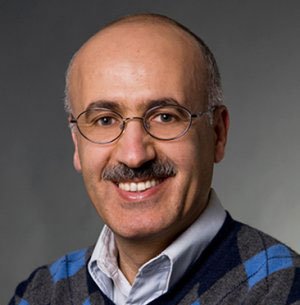 Dr. Husam Najm, PE
Dr. Husam Najm, PE
Bridge Analysis and Modeling Leader
Dr. Najm is an expert in the computer analysis and modeling of bridge structures, including seismic design, detailing, and construction of abutments and deep foundations such as steel and concrete piles and larger diameter drilled shafts. He worked on a project in which larger diameter drilled shafts were used in a transportation project for the first time in Massachusetts. Dr. Najm is an expert on concrete bridges and has significant experience in experimental work on the properties of high-performance fiber-reinforced concrete. He has authored and co-authored several publications on this subject. Dr. Najm teaches bridge and structural engineering at Rutgers University.
With superb expertise in analysis, design, and modeling, Dr. Najm is an asset to BTC Consulting Work.
Education:
- Ph.D., Structural Engineering, (1992) The University of Michigan – Ann Arbor, Michigan
- M.S., Structural Engineering, (1985) Michigan State University – East Lansing, Michigan
- B.S., Civil Engineering, (1982) The American University of Beirut, Lebanon
Professional Licenses:
- Licensed Professional Engineer, State of New York, USA
- Licensed Professional Engineer, State of Massachusetts, USA
- Licensed Professional Engineer, State of California, USA
Publications:
- Response of Laterally Loaded Group Shafts For Bridge Foundations in Cohesionless Soils Using 3d FE Soil-Structure Model, Journal of Bridge Structures, Volume 4, issue 3, September 2008.
- Flexural Behavior of Concrete Slabs with Corroded Bars, Journal of Cements and Composites, September – October 2007.
Evaluation of Laminated Circular Elastomeric Bearings, ASCE Journal of Bridge Engineering, Jan-Feb 2007. - Externally Post-Tensioned Precast Concrete Girders for SC-170 Broad River Bridge, PTI Journal, Vol. 3, No.1, May 2005, pp. 12-24.
- Impact of NCHRP 12-49 Provisions on the Seismic Design of Bridges on Soft Soils in New Jersey,” Journal of Bridge Structures, Vol. 1, No. 1, March 2005, pp. 29-42.
- Prediction of Early Age Normal Concrete Compressive Strength using Shear Modulus Measurements’, ASCE Material Journal, December 2012.
- Simplified Design Method for Bridge Piers Subjected to Unconfined Blast Hazards,”, Journal of Bridge Structures, Vol. 7, No. 1, 2011, pp. 31-41.
 Noel Stampfli, PE
Noel Stampfli, PE
Bridge Maintenance Leader
Mr. Stampfli served for 17 years as project manager for structural maintenance of the Golden Gate Bridge preceded by 15 years in capital project management of both bridge and transportation-related work as an owner’s representative.
His bridge maintenance experience includes development and management of a comprehensive, modernized maintenance program for the Golden Gate Bridge with primary responsibility for budgeting, planning, scheduling, procurement, design, specification preparation, manpower allocation, inspection and overseeing the efforts of an in-house labor force of 100 employees.
His capital project experience includes initial scoping, scheduling, permitting, consultant selection and management, design development and construction management. Project experience includes responsible charge of both bridge rehabilitation and a wide range of transportation agency projects.
Mr. Stampfli is active in the professional organizations in which he belongs, including numerous speaking engagements on the topic of bridge maintenance, committee memberships and has published several articles and papers on that subject.
Mr. Stampfli’s cable expertise brings unparalleled know-how in the maintenance of cable-supported bridges.
Education:
- B.S., Civil Engineering, (1980) University of California, Berkeley
Professional Licenses:
- Licensed Professional Engineer, State of California, USA
Publications:
- The Golden Gate Bridge: A History of Maintenance Practice, Journal of Protective Coatings and Linings, January 2008, Editors Choice Award.
- Maintaining the World’s Most Famous Cables, Wire Rope Exchange Magazine, December 2011.
- Maintaining an Icon – The Golden Gate Bridge, Proceedings of International Cable Supported Bridge Owners Association, Edinburg, Scotland, 2014
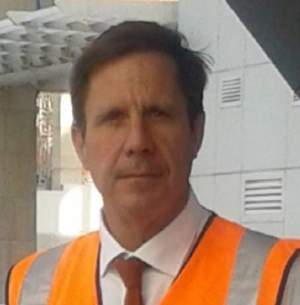 Birchard Ohlinger, PE
Birchard Ohlinger, PE
Construction Management Leader
Mr. Ohlinger has more than 25 years of Project Management experience in administering programs from conception to completion. Work history includes construction project management, quality control, field engineering, cost control and change order development. Extensive overseas work history (Middle East, S.E. Asia, and the Caribbean). Types of projects include elevated concrete rail construction (pre-cast/post-stressed concrete), elevated concrete structures renovation (piers and wharves) with associated cathodic protection systems, and soil stabilization programs.
He acted as Deputy Construction manager on a fast-tracked 6km long elevated light rail (pre-cast/post-stressed concrete spans which averaged 40 meters in length) with three passenger stations and a maintenance depot in Qatar. This $1.5 billion USD project was a design-build project employing 1,200 workers from different nationalities. Oversaw an engineering staff of 16 engineers and technicians monitoring quality control, design development, and progress of the joint venture Spanish-Turkish-Greek-Qatari Consortium. Extreme technical, weather and cultural challenges occurred on this project.
Mr. Ohlinger acted as the Professional Engineer for the City of Key West, where he managed a number of programs from design development to execution. Projects included roadways, electrical upgrades, and city waterfront projects.
With vast expertise, Mr. Ohlinger brings great experience in construction management and quality control of projects.
Education:
- B.S., Civil Engineering (Structures), (1984) Michigan Technological University, USA
Professional Licenses:
- Licensed Professional Engineer, State of California, USA
- Licensed Professional Engineer, State of Florida, USA
- Evaluating Strength of Long-Span Bridge Cables, K. Mahmoud, Keynote at the European Bridge Conference, Edinburgh, Scotland, March 2021.
- Design for Maintenance and Longevity of Long-Span Suspension Bridges, K. Mahmoud, 4th İstanbul Bridge Conference, Istanbul, Turkey, November 16-17, 2020.
- Risk-based evaluation of main suspension cables of the Forth Road Bridge in Scotland, K. Mahmoud, C. Gair and H. McDonald, New York City Bridge Conference, August 26-27, 2019.
- Towards International Specifications for Long Span Bridges, K. Mahmoud, Keynote at İstanbul Bridge Conference, İstanbul, Turkey, November 5-6, 2018.
- Fracture-based Analysis of Third Bosphorus Bridge Cable Bands, K. Mahmoud, Keynote at İstanbul Bridge Conference, İstanbul, Turkey, August 8-9, 2016.
- Inspection and Evaluation of Remaining Strength of Suspension Bridge Cables, K. Mahmoud, W. Hindshaw and R. McCulloch, The 9th International Cable-Supported Bridge Operator’s Conference, Halifax, Nova Scotia, Canada, June 19-22, 2016.
- Engineering for long span suspension bridges, K. Mahmoud, Keynote at Structural Faults & Repair Conference, Edinburgh, Scotland, May 17-18, 2016.
- Developments in the Strength Assessment of Bridge Cables. 86th Annual Meeting of the Transportation Research Board. Washington, D.C., January 12-16, 2007.
- Bridge Cable Health Monitoring and strength Evaluation, Seventh International Symposium on CABLE DYNAMICS, Vienna, Austria, December 10-13, 2007.
- Degradation Mechanics of Bridge Cables, Keynote at the 11th International Structural Faults & Repair Conference, Edinburgh, Scotland, June 13-15, 2006.
- Deterioration of Suspension Bridge Cable Wires. 82nd Annual Meeting of the Transportation Research Board, Washington, D.C., January 12-16, 2003.
- Hydrogen Embrittlement in Bridge Cable Wire, G. C. Sih, S. Sakai and V. E. Panin (Eds.), Mesomechanics of Computation and Design of Use-Specific Materials: Simulation and Fabrication of Advanced Materials with Mesoscopic Structures, University of Tokyo, 2003.
- Hydrogen Embrittlement of Suspension Bridge Cable Wires. System-Based Vision for Strategic and Creative Design, Bontempi, Editor. Swets & Zeitlinger, Lisse, 2003.
- An Absorbing Process. Bridge Design & Engineering, Second Quarter, 2003.
- Corrosion and Embrittlement Cracking of Suspension Bridge Cable Wires, First International Conference on Bridge Maintenance, Safety and Management, Barcelona, Spain, July 14-17, 2002.
- Hydrogen-Induced Degradation of Suspension Bridge Cables. First US-Italy Workshop on Bridge Design and Construction, Rome, Italy, July 18-20, 2002.
- Fatigue Health of Steel Bridges – An Investigation of Cracking Potential due to Microvoids, ASCE Structures Congress and Exposition, Denver, Colorado, 2002.
- Weak-Link Analysis for Seismic Retrofit of Bridge Structures, First International Structural Engineering and Construction Conference, Honolulu, Hawaii, January 24-26, 2001.
- Micromechanics of Fatigue Failure in Steel Bridges, First International Structural Engineering and Construction Conference, Honolulu, Hawaii, January 24-26, 2001.
- The Role of Microvoids in Reducing Fatigue Service Life of Steel Bridges, ASCE Metropolitan Section/Structures Group Spring Seminar, New York, April 2001.
- Accessible and Cost-effective Approach for Seismic Retrofit of Bridges, ASCE Structures Congress and Exposition, Retrofit of Existing Bridges Session, Washington D.C., May 21-23, 2001.
- Control of Seismically Excited Cable-Stayed Bridge Using resetting Semi-Active Stiffness Dampers, ASCE Journal of Bridge Engineering, Vol.6, No.6, pp. 376-384, Nov./Dec. 2001.
- Deterministic Modeling for Response of Bridges to Non-uniform Seismic Excitation, Journal of Bridge Engineering, Vol.6, No.6, pp. 587-597, Nov./Dec. 2001.
- Modeling the Fatigue Process in highway Bridges. The RILEM/CIB/ISO International Symposium on Integrated Life-Cycle Design of Materials and Structures, Helsinki, Finland, May 22-24, 2000.
- Damage Field ahead of a Tensile Crack in an Elastic-Plastic and Viscoplastic Material, International Journal of Fracture, Vol. 96, pp. 149-165, 1999.
- Damage Accumulation for Growth of an Anti-Plane Crack in a Work-Hardening Material, Theoretical and Applied Fracture Mechanics, Vol. 29, No. 1, pp. 41-48, 1998.



